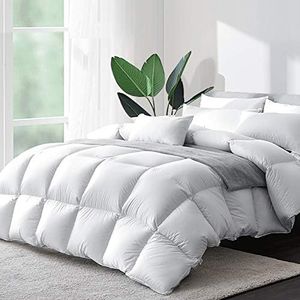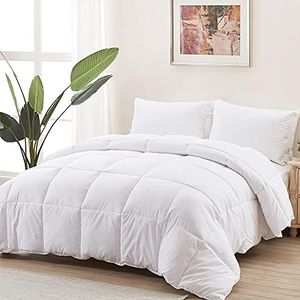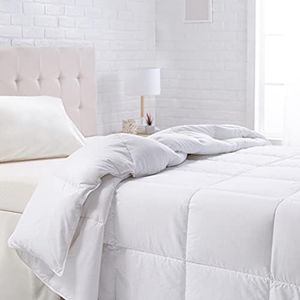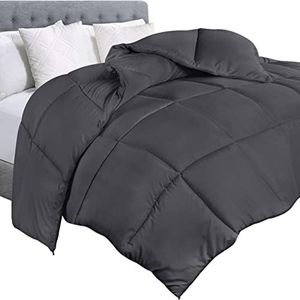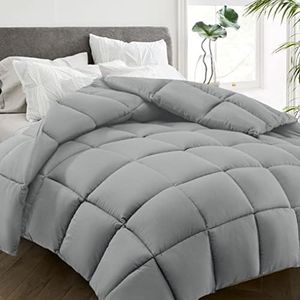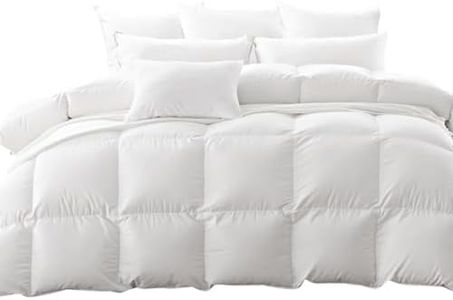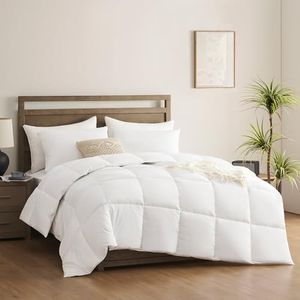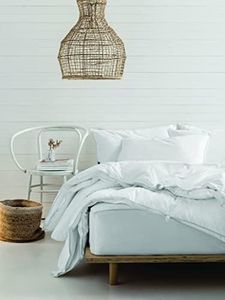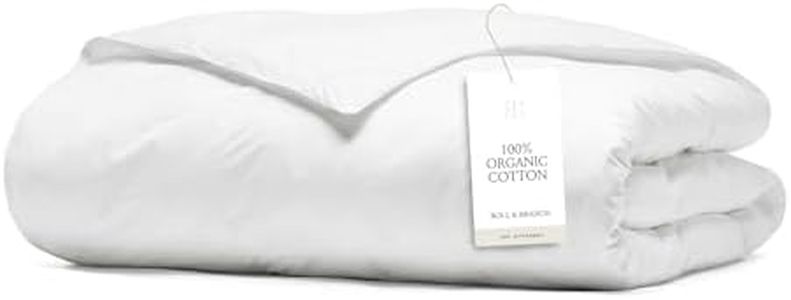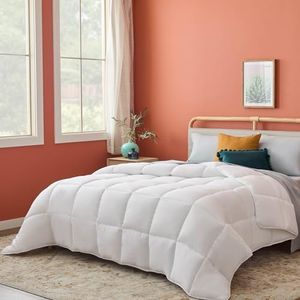We Use CookiesWe use cookies to enhance the security, performance,
functionality and for analytical and promotional activities. By continuing to browse this site you
are agreeing to our privacy policy
10 Best Down Duvet Inserts
From leading brands and best sellers available on the web.By clicking on a link to a third party's website, log data is shared with that third party.
Buying Guide for the Best Down Duvet Inserts
Choosing the perfect down duvet insert can make a huge difference in your sleep quality and overall comfort. It's important to consider several key aspects, since each person may have different preferences for warmth, weight, and care requirements. Understanding the main factors that define a down duvet insert will help you select the one that fits your sleeping style and environment the best.Fill PowerFill power refers to how much volume one ounce of down occupies, essentially measuring its fluffiness and insulating ability. Higher fill power means the insert is warmer and lighter, while lower fill power is heavier and may not trap as much heat. Fill power typically ranges from about 500 to 900. In cooler climates or for those who prefer a cozy, lofty duvet, look for higher fill power. If you sleep warm or live in a milder climate, a duvet with lower fill power might be more suitable and comfortable.
Fill WeightFill weight is the total amount of down used inside the duvet, measured in ounces or grams. This directly affects how warm and heavy the insert feels. Lightweight options are good for summer or warm sleepers, while higher fill weights are best for colder seasons or if you like a substantial, snug feel at night. Your choice depends on your climate and your personal preference for sleeping temperature.
Down TypeThe type of down—such as goose or duck—can impact the softness, durability, and warmth of the insert. Goose down is generally softer and offers better insulation, often found in more luxurious duvets, while duck down is still insulating but may be a bit firmer or less fluffy. If you’re sensitive to quality and long-term durability, consider goose down; otherwise, duck down remains an effective and affordable option.
ConstructionThe way the duvet insert is constructed affects how the down stays distributed and how well it insulates. Common styles are baffle box (which keeps down evenly spread and adds loft) and sewn-through (which is flatter and tends to be cooler). Choose baffle box if you want consistent warmth across the whole insert; if you prefer a lighter and less warm insert, sewn-through construction may suit you better.
Cover FabricThe outer material, often made of cotton or microfiber, can influence breathability, softness, and how well it retains the down. Higher thread count fabrics are usually softer and less likely to let down feathers poke through. If you prioritize a smooth, quiet, and durable fabric, look for tightly woven cotton with a higher thread count; for something more affordable and lightweight, microfiber can be a good fit.
Allergen ControlSome down inserts are specially treated or encased in allergen-barrier fabrics to make them suitable for people with sensitivities. If you have allergies or concerns about dust mites, choose a duvet labeled as hypoallergenic or one that offers extra protection through its cover or down processing.
Care & MaintenanceWashing and caring for a down insert is crucial for its lifespan. Some inserts can be machine-washed, while others require professional cleaning. If you want something easy to care for, check if it's machine-washable and fits in your washer and dryer. For those who don’t mind a trip to the cleaners for periodic deep cleaning, care requirements might be less important.
